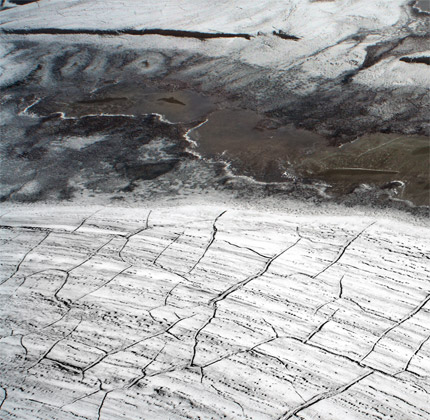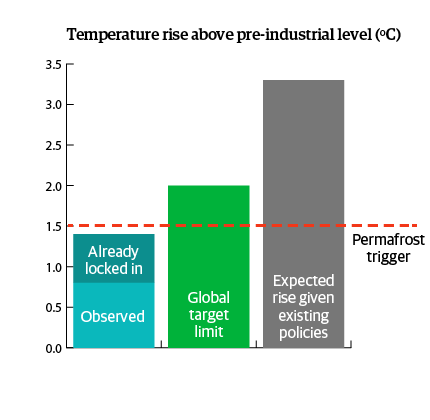What is permafrost?
Permafrost is soil that has remained below 0C (32F) for more than two years. It occurs in high-latitude or high-mountain areas where the summer warmth fails to penetrate the ground enough to thaw the soil. These conditions prevail in roughly a quarter of the Earth's land surface, including Alaska, Canada and Siberia. The thickness of permafrost ranges from a few metres to many hundreds of metres, depending on the local climate.

Frozen carbon
Permafrost soils are extremely rich in organic carbon. According to one estimate they contain about 1,700bn tonnes of it – about twice the total amount currently in the atmosphere. When the permafrost thaws, the decomposition of organic matter through microbial activity increases sharply, triggering a process through which a large amount of carbon will eventually get respired into the atmosphere as CO2 and methane.

Emissions to come
One recent study estimated that about one-tenth of the permafrost carbon pool might get released by 2100 unless global warming is slowed. That's equivalent to around 20 years of man-made CO2 emissions at current rates or almost a quarter of the world's remaining carbon budget for a 50% chance of hitting its 2C target. By 2300 the total would have increased enormously.
Data from: TrillionthTonne and Edward Schuur et al

Warming threshold
To increase the world's understanding of the temperature rise that might cause deep, northerly permafrost to thaw, scientists travelled to caves in northern Siberia and examined stalactites and stalagmites formed from melted water over half a million years. They found that the threshold for thawing there is around 1.5C above pre-industrial century levels.
Image source: Anton Vaks

Warming threshold
The world has already warmed by around 0.8C and is expected to rise a further 0.6C even if we stopped all emissions tomorrow, due to factors such as the heat that's been building up in the oceans. So the world should expect widespread thawing soon and large amounts of additional carbon emissions to be added to the atmosphere this century.

